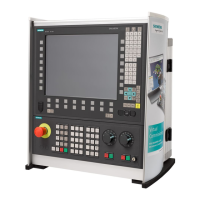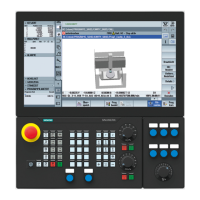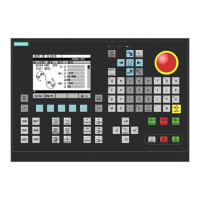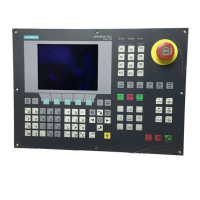Detailed Description
2.3 Feedrate control
Feeds (V1)
Function Manual, 08/2005 Edition, 6FC5397-0BP10-0BA0
2-35
0'
08/7)(('B$66,*1B)$67,1
ELWV
0'
08/7)(('B$66,*1B)$67,1
ELWV
0'
08/7)(('B$66,*1B)$67,1
ELWV
0'
08/7)(('B$66,*1B)$67,1
ELWV
B
B
%LW%LW
%\WH
%\WH
%LW
%LW
'LJLWDOLQSXWE\WH
RU
&RPSDUDWRULQSXWE\WH
'LJLWDOLQSXWE\WH
RU
&RPSDUDWRULQSXWE\WH
,QYHUVLRQVFUHHQIRUP
,QSXWELW
,QYHUVLRQVFUHHQIRUP
,QSXWE\WHIRU
0XOWLSOHIHHGUDWHV
LQRQHEORFN
Fig. 2-5 Signal routing for "Multiple feeds in one block"
The assignment of the digital input bytes and parameterization of the comparators are
described in:
References:
/FB/ Description of Functions, Basic Machine; Various Interface Signals (A2)
Programming path motion
The path feedrate is programmed under the address F and remains valid until an input signal
is present. This value acts modally.
F2=... to F7=... can be used in addition to the path feedrate to program up to 6 further
feedrates in the block.
The numerical expansion indicates the bit number of the input that activates the feedrate
when changed:
e.g., F7=1000 ; 7 corresponds to input bit 7.
Bits 2 to 7 are permissible for numerical expansion of the feedrate. The programmed values
act non-modally. The path feedrate programmed under F applies in the next block.
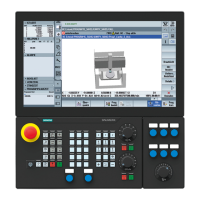
